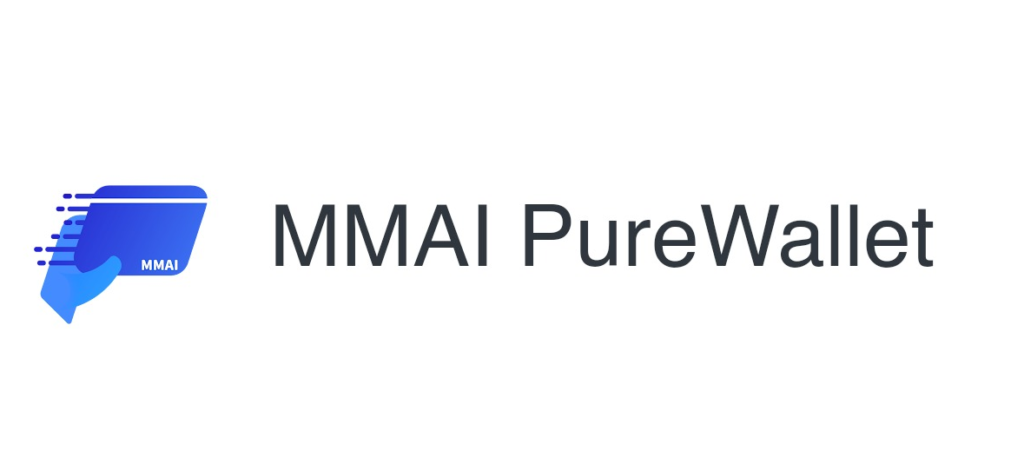Table of Contents
In this article, we will offer our insights and predictions on how Application Programming Interfaces (APIs) are evolving from the centralized, Web2 technology to the decentralized, blockchain-based Web3 technology.
Web2 has been the predominant form of the internet for the past decade, but Web3 is quickly gaining momentum. Web3 is a decentralized web that uses blockchain technology and peer-to-peer networking to create a more secure, transparent, and trustless internet. As a result, Web3 APIs are becoming more popular, as they provide developers with tools and protocols to interact with the decentralized web. In this article, we will compare Web2 APIs with Web3 APIs, and provide examples of the top Web3 APIs for blockchain, cryptocurrency wallets, and metaverse.
Web2 APIs
Web2 APIs are based on centralized services that provide developers with tools to build applications that interact with the web. Examples of Web2 APIs include social media APIs, payment APIs, and weather APIs, among others. These APIs rely on centralized servers, and the data is stored in a centralized database. This makes them vulnerable to attacks, and the data is often controlled by a few companies.
Web3 APIs
Web3 APIs are based on decentralized technologies that enable developers to interact with the decentralized web. The most popular decentralized technology is blockchain, which is a distributed ledger that enables secure and transparent transactions. Web3 APIs provide access to various blockchain functions, such as creating and managing wallets, sending and receiving cryptocurrency transactions, querying blockchain data, and more. Here are the top examples of Web3 APIs for blockchain, cryptocurrency wallets, and metaverse:
Blockchain APIs
Blockchain technology has been gaining traction in recent years due to its potential to disrupt various industries, from finance to healthcare to supply chain management. As a result, there has been a growing need for blockchain APIs that enable developers to interact with blockchain networks, build decentralized applications, and perform transactions. In this section, we will explore some of the most popular blockchain APIs available to developers, and discuss their key features and benefits.
Ethereum Web3.js API
This API allows developers to interact with the Ethereum blockchain, and enables them to create and manage smart contracts, interact with dApps, and send and receive transactions.
Algorand API
This API provides developers with a simple and fast way to build on the Algorand blockchain, and enables them to create and manage accounts, perform transactions, and query blockchain data.
Binance Smart Chain API
This API allows developers to build decentralized applications on the Binance Smart Chain, and provides access to various functions such as creating and managing wallets, sending and receiving transactions, and querying blockchain data.
Solana API
This API provides developers with a high-performance blockchain platform that supports fast and low-cost transactions, and enables them to build decentralized applications, perform transactions, and query blockchain data.
Chainlink API
This API provides developers with access to off-chain data and services, such as price feeds, weather data, and other real-world data. This is useful for DeFi applications, prediction markets, and other use cases that require reliable and trusted off-chain data sources.
Cryptocurrency Wallet APIs
Cryptocurrency wallet APIs are becoming increasingly important in the world of cryptocurrencies as they enable developers to create and manage digital wallets, send and receive transactions, and interact with decentralized applications on the blockchain. These APIs provide developers with the tools they need to build powerful and secure cryptocurrency applications that offer seamless and efficient user experiences. In this section, we will explore some of the most popular cryptocurrency wallet APIs available to developers and discuss their key features and benefits. Whether you’re a seasoned cryptocurrency developer or just starting out, this section will provide you with valuable insights into the world of cryptocurrency wallet APIs.

MyEtherWallet API
This API allows developers to create and manage Ethereum wallets, send and receive transactions, and interact with dApps on the Ethereum blockchain.
Coinbase Wallet API
This API allows developers to create and manage cryptocurrency wallets on the Coinbase platform, and enables them to perform transactions and access various cryptocurrency services.
Trust Wallet API
This API provides developers with tools to build decentralized applications, manage cryptocurrency wallets, and perform transactions on various blockchain networks.
Ledger Live API
This API enables developers to interact with the Ledger hardware wallet, and provides access to various functions such as creating and managing accounts, performing transactions, and querying wallet data.
Metamask API
This API allows developers to create and manage Ethereum wallets, interact with dApps, and perform transactions on the Ethereum blockchain.
Metaverse APIs
In addition to blockchain and cryptocurrency wallet APIs, Metaverse APIs are another important category of Web3 APIs. They enable developers to build virtual worlds and experiences on the decentralized web. Metaverse APIs provide access to various functions such as asset creation, world-building, and interaction with other users within the metaverse. Here are the top examples of Metaverse APIs:
Decentraland API
This API allows developers to build virtual reality experiences and applications on the Decentraland platform. It provides access to various functions such as asset creation, world-building, and interaction with other users within the metaverse.
Somnium Space API
This API provides developers with tools to create immersive experiences and applications on the Somnium Space metaverse. It also enables users to buy, sell, and rent virtual land and assets.
CryptoVoxels API
This API allows developers to create and manage virtual worlds on the CryptoVoxels platform. It provides access to various functions such as land ownership, asset creation, and interaction with other users.
The Sandbox API
This API enables developers to build games and applications on The Sandbox metaverse. It provides access to various functions such as asset creation, world-building, and interaction with other users.
SuperWorld API
This API provides developers with tools to create and manage virtual assets and experiences on the SuperWorld metaverse, which is a virtual representation of the real world.
Transaction fees:
A lucrative revenue stream for Web3 API providers In addition to the benefits of increased security and trust, Web3 APIs offer new revenue streams for companies that provide them. One way for a company to make money on Web3 APIs is through transaction fees. Similar to traditional payment processors, a company that provides Web3 APIs can charge a small transaction fee for each microtransaction that takes place on its platform. The fee can be a percentage of the transaction amount or a fixed fee per transaction. This can be a lucrative revenue stream for the company, as the volume of microtransactions on the Web3 is likely to grow in the coming years.
Subscription-based model:
Another way to monetize Web3 APIs is through a subscription-based model. A company can offer a subscription-based model for its Web3 APIs, where developers pay a monthly or yearly fee to access the APIs. This model can be beneficial for developers who require frequent access to the APIs and want to avoid paying transaction fees on a per-transaction basis.
Value-added services:
A company can also offer value-added services on top of its Web3 APIs to generate additional revenue. For example, a company can offer analytics tools that help developers optimize their micropayment strategies or provide customized consulting services to help developers integrate Web3 functionalities into their applications.
Developer community:
By providing high-quality Web3 APIs, a company can build a developer community around its platform, which can create additional revenue streams. For example, a company can offer training and certification programs that enable developers to become experts in using the APIs, or offer a marketplace where developers can sell their Web3 applications and services to other users.
Partnerships and integrations:
A company that provides Web3 APIs can partner with other companies and integrate its APIs into their services. For example, a company can partner with a decentralized social media platform and provide micropayment APIs that enable users to earn small amounts of cryptocurrency for posting high-quality content. This can be a win-win situation for both companies, as it allows them to offer additional value to their users and generate additional revenue streams.
How investors can benefit from API microtransactions:
As a blockchain and crypto company, it’s likely that the company has issued its own cryptocurrency or token that investors can purchase. One way in which holders or investors can benefit from API microtransactions is by earning rewards or incentives in the form of the company’s native token.
For example, the company can offer rewards or incentives to users who make microtransactions on its platform using its native token. This can encourage users to use the token and increase its value, which can benefit the holders or investors. Additionally, the company can use its token as the primary form of payment for the transaction fees associated with its microtransaction APIs, which can increase demand for the token and drive its value up.
Furthermore, by providing a high-quality Web3 API, the company can increase demand for its token as developers and users will need to hold the token to access the APIs. This can drive up the token’s value and benefit the holders or investors.
In addition to incentives and increased demand, holders or investors can also benefit from the revenue generated by the company’s microtransaction APIs. As we discussed earlier, the company can charge a small transaction fee for each microtransaction, and the revenue generated from these fees can be distributed to the holders or investors as a dividend or used to buy back and burn the company’s token, which can increase its scarcity and value.
MMAI: The company with a bigger Web3 technology vision
The MMAI is a company that is developing a blockchain, metaverse, and crypto wallet, and is focusing on making money through API microtransactions. The company has decided not to hold any tokens or coins for its own use, and neither the developers nor the team members hold any either. The company’s goal is to create a Web3 company and make money through microtransactions using its own coin.

The MMAI is creating a suite of high-quality Web3 APIs that support micropayments and other functionalities. By providing these APIs, the company is enabling developers to build decentralized applications and services that support micropayments, which can open up new revenue streams for content creators, game developers, and other providers of digital content.
The MMAI’s decision not to hold any tokens or coins for its own use is a unique approach in the Web3 space, as many blockchain and crypto companies hold a significant portion of their own tokens or coins. By not holding any tokens or coins, the MMAI is signaling that it is focused on building a sustainable Web3 company that generates revenue through its APIs and microtransactions, rather than speculating on the value of its own token or coin.
The MMAI’s coin is the primary form of payment for the transaction fees associated with its microtransaction APIs. By requiring the use of its own coin for transaction fees, the MMAI is increasing demand for the coin, which can drive its value up and benefit its holders or investors.
In addition to transaction fees, the MMAI can also generate revenue by offering value-added services on top of its Web3 APIs. For example, the company can offer analytics tools that help developers optimize their micropayment strategies, or provide customized consulting services to help developers integrate Web3 functionalities into their applications.
Furthermore, the MMAI is planning to lease virtual property for its own metaverse, called “PureWorld.” This can create additional revenue streams for the company, as it can charge rent or fees for the use of the virtual property.
The company’s metaverse platform can use microtransactions to monetize digital assets, such as virtual real estate or in-game items. By providing high-quality Web3 APIs that support micropayments and other functionalities, the MMAI is enabling developers and users to engage in these microtransactions and generating revenue through transaction fees.
The MMAI’s decision not to hold any tokens or coins for its own use, and requiring the use of its own coin for transaction fees can increase demand for the coin and drive its value up, which can benefit its holders or investors. In addition, the MMAI’s value-added services and metaverse leasing can also provide additional revenue streams for the company, and ultimately benefit its holders or investors.
Conclusion
Web3 APIs are becoming increasingly popular as developers look for ways to build decentralized applications and services on the decentralized web. While Web2 APIs are still dominant, the shift towards Web3 is evident. The decentralized nature of Web3 APIs offers greater security, transparency, and trust, and enables developers to build more robust and secure applications. With the growing popularity of blockchain and metaverse technologies, the future of Web3 APIs looks promising, and we can expect to see more innovative use cases and applications in the coming years.
Furthermore, as discussed in this article, Web3 APIs and microtransactions offer numerous revenue opportunities for companies, such as transaction fees, subscription-based models, value-added services, developer communities, partnerships, and integrations. These opportunities, in turn, can benefit holders or investors of a company’s native token or coin, providing rewards, incentives, increased demand, and revenue.
Final Thought
The MMAI’s innovative approach to building a sustainable Web3 company through high-quality APIs, microtransactions, and metaverse leasing demonstrates the exciting possibilities of the Web3 space. As more companies and developers join the Web3 ecosystem, we can expect to see even more disruptive and transformative applications and services emerge, ushering in a new era of the internet.
Disclaimer
The information in this article is provided for educational and informational purposes only. It is not intended to be a substitute for professional advice or services. The views and opinions expressed in this article are those of the author and do not necessarily reflect the official policy or position of any company or organization mentioned. Readers are advised to do their own research and seek professional advice before making any decisions based on the information provided in this article. The author and publisher of this article are not responsible for any errors or omissions or for any actions taken based on the information contained in this article.



